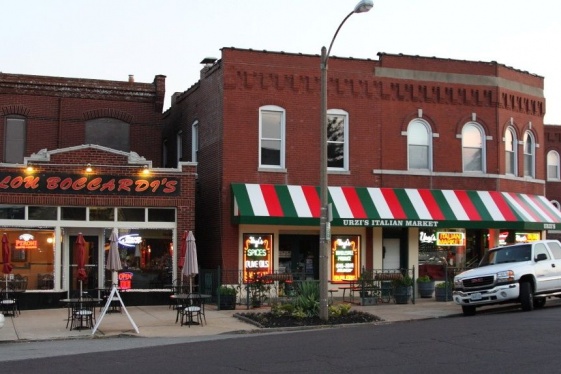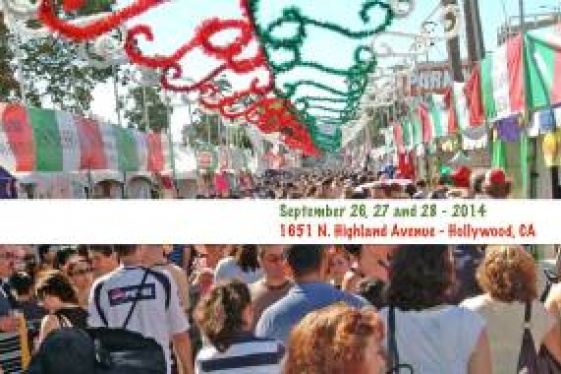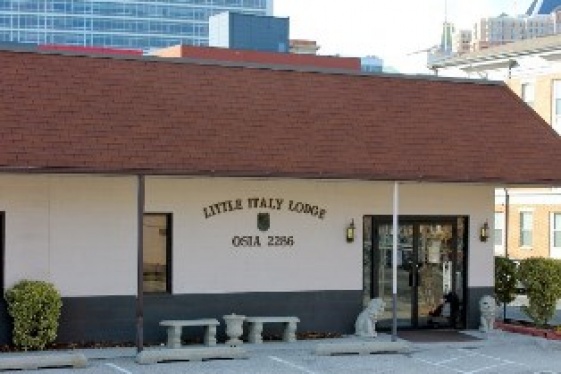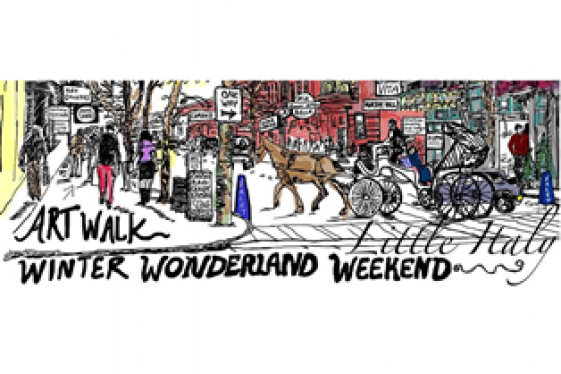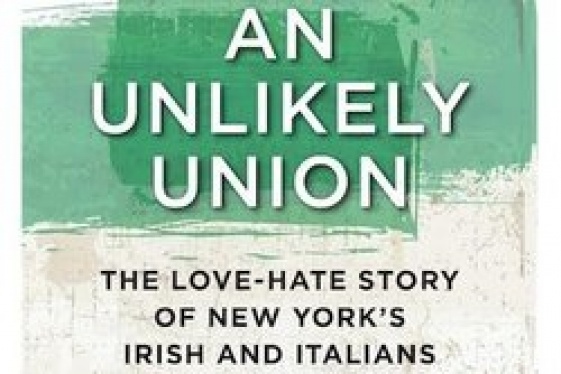
Gianfranco Norelli and Suma Kurien (Film Directors)
L'emigrazione italiana in California come mai era stata raccontata: Finding the Mother Lode

A few years ago a wonderful documentary, "Bitter bread" (Pane Amaro) described the story of the Italian emigration to the east coast. It was a milestone in this field, and now the two authors and producers, Gianfranco Norelli and Suma Kurien, are back with another marvelous documentary, this time about the Italian emigration to the west coast: "Finding the Mother Lode".
A series of screenings in California is starting on april 5 at the University of the Pacific in Stockton, and then goes on for the whole month. The list of screenings and the link to purchase this independent dvd on Amazon can be found on the website www.findingthemotherlode.com We are very thankful to Gianfranco and Suma for having met us and for their works, two precious jewels that perfectly describe the main part of the Italian emigration to the US.
Gianfranco and Suma, your new documentary is called "Finding the Mother Lode". Please tell us something about it
We wanted to shed some light on a part of the immigrant experience of the Italians in the United States, that goes a little bit against the stereotype of the Italians, all concentrated in the Little Italies in small urban enclaves of the East coast. All that many people know about the Italian immigrants is related to the tenements they were living in, in very crowded places, poor neighborhoods, very isolated from the rest of the surrounding American society. In California we found a different experience and the reason is that in California there were many more opportunities that Italians could take advantage of.
When the Italians arrived, during the period of the gold rush, California had just been formed as a State, and therefore was very fluid: every skill was needed and there were therefore opportunities to buy land, sometimes even to get land without buying it. There were land grants designed to facilitate the creation of communities, and so the Italians found the way to use the skills that they already had from Italy.
Those who had experience as farmers, were able to find land and continue to be farmers; those who were fishermen were able to fish; those who were making wine, were able to start wine making companies in California. This allowed them to be successful earlier and to find a quicker and easier integration in the Californian society; and it also allowed them to send their kids to school earlier. Besides, the climate in California was very similar to Italy, so that Italian farmers were able to plant things that they knew how to plant, sometimes they even brought plants from Italy: so they were able to transfer skills, a knowledge that they had from Italy to California.
This documentary follows your previous one, a work of great value and success, "Pane Amaro" (Bitter bread), which tells the story of Italian immigrants on the east coast of the USA. You already started telling us: what is the difference between the experiences recounted in the two documentaries?
Those who came to the East Coast could not have land as easily, the climate was very different, not as hospitable to the kinds of plants – Mediterranean plants - that they were used to farm in Italy. And on the east Coast they found an already pretty structured situation, with a well-established social hierarchy, because they came after many other waves of Northern European immigrants, already established in the society. So when the Italians came to the East Coast, even if many of them were farmers in Italy they found themselves digging ditches or building the subway in New York, and they could not apply there the skills that they had.
This is the most important difference, but not the only one. What happens with the following generations is also different, because the Italians on the East Coast had a access later to education for their kids; they don't have lawyers and congressmen, not until a much later period; while on the west coast, there is a congressman of Italian heritage in 1891 already. His name is Anthony Caminetti: we mention him as an example of this at the beginning of the documentary. He was born there, the son of a Sicilian immigrant, in the area of the gold rush; and after becoming a quite prominent lawyer in the Italian American community in California, he ran and was elected to Congress in Washington in 1891. Interestingly enough, later he was appointed Federal Commissioner of Immigration, for the whole country, and in reality he advocated limiting immigration, especially of the Chinese.
Another difference with the East Coast is that California was not very populated. California was looking to bring in immigrants to populate the State, and immigrants of European origin were preferred. They had immigrants from Asia – in large numbers from from China - and they were seen as undesirable outsiders; so Italians were seen as much more desirable, in a way that they were definitively not seen on the East Coast.
So, what's important to mention is the different racial and social landscape on the two coasts. In the East Coast there already was a large number of European immigrants, northern Europeans and eastern Europeans who had already settled there and they establish themselves in different professions; they acquired lands and properties; they became professionals; so they were quite the establishment when the Italians arrived, and for the Italians the space that they found in this hierarchy was at the bottom.
See the case of Louisiana, in which the Italians and in particular the Sicilian immigrants that came at the end of the 1800 initially found jobs abandoned by the African Americans when they were freed from slavery: working in cotton and sugarcane plantations, extremely hard jobs that no other whites wanted to do. But the Sicilians who arrived in Louisiana were willing to do any available job, and in fact they were hired by American recruiters in Sicily. Now, the fact that they took these jobs put them, in the eyes of many Americans, at the same level of those who were doing those jobs before: the slaves. They were discriminated, considered aliens, and their integration was very hard. In 1891 an Italian American in California was elected to the Congress of the United States.
In the West Coast, on the contrary, the racial landscape included a very large number of Mexican, Chinese, Japanese people: the Europeans were the minority in many communities, so Italians were often welcomed by the other Europeans. On the West Coast, the Asians were those who particularly suffered racial hostility more than others.
Another big difference was that organized crime was much more prevalent on East the Coast, in Chicago, New York, New Orleans, than it ever became on the West Coast. We didn't explore this very much in the film, but one thing that people would said was: "We didn't need PADRONI, we didn't need the Mafia to help us get protection from the government, or to help us to socially or economically integrate. We could do fine on our own!".
So, the fact that organized crime did not become very powerful on the West Coast also meant that there wasn't the kind of prejudice against Italians like instead what happened in the rest of the country, where they were often associated with the mafia. The Italians on the West Coast made a very conscious effort to make sure that their image would be a very different one.
Later in the XX century, when travelling from the East Coast to the West became easier, many more Italian immigrants came; and Italians in San Francisco, who were already established, were concerned that the new immigrants would be unemployed, hanging around the streets, and giving a bad image of Italians: so, in many cases they try to find them jobs in the farms of the interior.
What is the "Mother Lode" ?
"The Mother Lode" is translated in Italian as "la Vena Madre", which would be the main gold vain and it has almost a mythological significance. So, finding the vein of gold becomes a metaphor of success, and that's why we chose it as our title. In the beginning of the film we interview an engineer expert of mining who says that there was not a lot of gold, and certainly very few of the hundreds of thousands of people that came for the gold rush, were able to find gold. The gold that the Italians found, their mother lode, ended up being agriculture, commerce, fishing and wine-making the ability to use the skills that they had, because the opportunities were so many. They prospered!
For those who will read the interview without having seen yet the documentary, it also talks about dramatic stories, which relate to the harsh life - and death, in the case of the Argonaut mine disaster – of those immigrants ...
There were two waves of immigrants. In the first wave, some arrived just at the beginning of the gold rush - 1848/49: they were coming from all over the world and they were called "the Forty-niners". The Italians who came with that wave found very little gold, but they became prosperous starting farms and enterprises. There was a saying at that time: "Italians did not mine the mines, they mined the miners", meaning that their fortune and success came not from finding gold but from selling to the miners everything they needed, from tools to transportation, boarding houses, food.
There was also a second wave of immigrants, that came in at the beginning of the 1900, made mostly of single man, who were not as successful as the wave of the pioneers; so this young men ended up working in the mines doing the hardest job, working very deep up to thousand meters under the surface. In the Argonaut Mine disaster, about 48 miners were trapped very deep in the mine in a gas explosion and they were not rescued in time: when they were found there was a sign on the wall saying that the gas was getting stronger. They died before being found, and half of those miners were Italian immigrants.
In many cases these immigrants were unknown to the community, because they were temporary laborers that went from one mine to another, did not often speak English, did not have any connection to the community, and when they died they would often be put in common graves, unmarked graves with no names on that.
Is there a difference between those who came to San Francisco and those who came to Los Angeles?
Well, in San Francisco there was an early arrival of a large number of Italians, and also many entrepreneurs who started businesses, created banks. San Francisco became what they use to call "the model colony", a community which also had art, Italian book-stores, an intellectual life: the Italian community created the San Francisco Opera house. In general they were able to be economically successful and socially prominent.
In Los Angeles, instead, the community was much more smaller and scattered: they ended up moving in other areas surrounding the city, developing agriculture, commerce, businesses all over but the community was more spread out and not as concentrated in one area as it happens in San Francisco.
Some of the earliest Italian immigrants to Los Angeles actually married into the wealthy Mexican families that ruled Southern California before the annexation into the US. Many of them even adopted Spanish versions of their names.
Which are the important places in the story of Italian immigrants in California?
We think that some of the most important early Italian settlements are San Francisco, the Sonoma and Napa valleys. The wine industry in California was not entirely started by Italian, there were other wineries by Germans, Hungarians and French ... but the countryside around Sonoma as we know it today is very similar to Tuscany because of the cypresses, the olive trees, the vines: a creation of many small Italian farmers that established vineyards there. Besides, the Italian wineries were able to survive prohibition quite well: the wineries that succeeded and grew were largely Italian.
What about Los Angeles and San Francisco: did they have a Little Italy?
In San Francisco, the center of the Italian life was where the church of San Peter and Paul was. North Beach also had three Italian newspapers (the most important of which was "L'Italia") and it had many Italian business places, with two large communities at the beginning, the Sicilians and the Genovese. The Sicilian were mostly fishermen, the Genovese also started with fishing and then developed another prosperous economic activity, the garbage collection: they used to be called "the scavengers".
These "Scavengers" (rumentai in Genovese dialect) realized that they could make a lot of money by collecting garbage and charging fees to their customers and also recycling everything, from paper to glass, metal, buttons ... everything you can think they were able to resell. So they started this activity, created a cooperative with initially 150 members and the company slowly grew and was granted a charter by the city, giving them a monopoly in collecting garbage. So the value of the company grew up enormously, and after working 30/40 years there, they could retire with a lot of money: we have in the film the story of a family that for five generations have been involved whit this garbage collection and recycling ... the man we interviewed says: "Yes we were the first recyclers by far".
Is there a character or a story, unknown to most people, that you feel important to mention?
We think that Amadeo P. Giannini, who created the Bank of Italy, qualifies, because few people really know about him outside the Italian American community, and certainly few people know about him in Italy. Bank of Italy later became Bank of America.
Through his work he was able to have impact on many others Italians in the community: he gave loans without requiring collaterals, the Bank of Italy was the first to start giving loans to farmers, to immigrants without moneys. He had a very targeted campaign, marketing savings in the bank as an important way for Italian families to economically grow, he would send young Italian men to visit families and persuade them to put the money in the bank. But he also had the policy of giving money to farmers, and we met many wineries owners and farmers who talked about how crucial that was at the beginning. In the film we talk about a man whose father needed money to bring in the harvest, and was given money by A.P.Giannini. He was a visionary who understood the situation of farmers and immigrants family, and made a difference for many of them: but he also saw that they represented an important market, that he could count on to grow his business.
It is worth mentioning where he started. He originally was a vegetables whole sale person and he worked at some point for a bank, and found that the banking community was very closed to new immigrants: because the banking industry, before his Bank of Italy, only lent money to people who had collateral, who had a way to guarantee that they would pay back, which meant that they only lent a lot of money to people who were already rich. He realized that the people who were asking for loans were very hard workers and that they had good work ethics. So first he started to lend money to Italian immigrants and then he expanded his business to Portuguese and Chinese, and his business grew and grew. He was an innovator, a visionary, a creative business man. For the Italians in California, this allowed them to put the down payment to get a piece of land and develop a farm, or to buy a little store, and from there they became successful.
Something to mention is definitively the story of the Italians in California after Pearl Harbor ...
That's a very important story. After Pearl Harbor, the American Government was very concerned that there could have been another attack on the West Coast, and therefore they became suspicious that people who came from countries that became enemies, like Italy, Japan and Germany, could help the enemy during this hypothetical invasion.
At that time, 600.000 Italian immigrants who have not become yet American citizens, were declared enemy aliens, along with all Japanese and German immigrants.. This led to a series of restrictions and controls: they could not circulate in the streets during the night without a pass that police could ask, a series of restrictions made their life more difficult, and in California it was even worse. Over 10.000 Italians living along the Coast were forced to relocate and move away from the Coast: those who were affected the most were the fishermen. For instance, the father of the baseball celebrity Joe Di Maggio was a fisherman: his boat was confiscated and the family was forced to move away from the coast. So many people suffered because of this relocation: besides, about 400 people of Italian origins were actually interned in prison camps away from California. The largest one was Fort Missoula Internment Camp, in Montana, where Italians who had had some connection with filo fascist organization, and thus were considered dangerous, were sent. But this did not last more than seven months, after that, when Italy ceased to be an enemy during World War II, the American government lifted the restrictions against the Italians.
One of the things we talk about in the film is the impact that the whole designation of enemy aliens had on the Italian community ... because there was a sense of stigma, of fear about displaying their Italian culture ... there were stores in San Francisco with posters that said "No Italian is spoken in the store" or "Do not speak the enemy's language". Besides, the California Senate created a committee to investigate Italians, being accused of having sympathy for the enemies and thus seen as fascist: a very humiliating experience for many people, even many powerful and prominent members of the community, like Angelo Rossi who after having been the San Francisco mayor for ten years was accused to be fascist and wept at this huge humiliation.
You may be interested
-
“The Art of Bulgari: La Dolce Vita & Beyond,...
by Matthew Breen Fashion fans will be in for a treat this fall when the Fine Arts Museums...
-
“The Hill” St. Louis’ Little Italy
When the fire hydrants begin to look like Italian flags with green, red and white stripes,...
-
13th Annual Galbani Italian Feast of San Gen...
In September of 2002, some of Los Angeles' most prominent Italian American citizens got to...
-
1st Annual Little Italy Cannoli Tournament
Little Italy San Jose will be hosting a single elimination Cannoli tournament to coincide...
-
2015 scholarship competition
The La Famiglia Scholarship committee is pleased to announce the financial aid competition...
-
30th Annual Art Holiday Walk, Winter Winter...
Holiday walk hours Friday, 12/5 noon-9pm, Saturday ,12/6 noon-9pm Sunday, 12/7 noon-6pm. S...
-
An Unlikely Union: The love-hate story of Ne...
Award-winning author and Brooklynite Paul Moses is back with a historic yet dazzling sto...
-
Candice Guardino Brings GILDA AND MARGARETTE...
Candice Guardino is adding to her list of successful theatrical productions with the debut...






